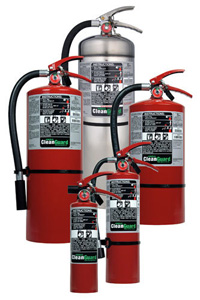



Find all of your laboratory and workplace safety supplies at Safety Emporium!
 Nephrotoxin |
 Glossary Index |
 NFPA |
| MSDS Topics |
Free Sites | FAQ's | Regulations | Glossary | Software | Suppliers |
| Books | Forum | Poll | Fun stuff | Quiz | Store | |
| Understand your MSDS with the MS-Demystifier | Search ALL our MSDS info | |||||

Get your GHS-compliant labels and signs from Safety Emporium.
A neurotoxin is a toxic agent or substance that inhibits, damages or destroys the tissues of the nervous system, especially neurons, the conducting cells of your body's central nervous system. This is an example of a cytotoxin.
Neurotoxic is the adjective form. For example, organophosphates are neurotoxic pesticides.
Neurotoxicity is a form of toxicity caused by a neurotoxin.
Neurotoxicology studies the effects of toxic substances on the nervous system. A neurotoxicologist is one who studies neurotoxins and their effects.
Neurotoxic effects cover a wide range including behavior changes, seizures, altered sensations, tingling or numbness in the limbs, memory loss, and even death. See the links under Further Reading for specifics.
One unfortunately common neurotoxin is the linear chain alkane, n-hexane, a commonly used solvent and degreaser. OSHA's permissible exposure limit of 500 ppm for this material is believed by some experts to be at least an order of magnitude too high to adequately protect workers. The other (branched) isomers of n-hexane do not exhibit neurotoxicity, so consider switching one of those or heptane to avoid workplace exposure. Detailed information can be found in ATSDR's Toxicological Profile for n-Hexane.
Heavy metals such as lead are another common class of neurotoxins.
Safety Data Sheets should warn the reader of neurotoxic dangers in Section 11 (toxicological information). Both acute and chronic (long and short-term) exposure to certain organic chemicals can cause a variety of health problems including narcosis, anesthesia, CNS (central nervous system) depression, respiratory arrest, unconsciousness, coma, and death. See the first link below for more information.
Treat neurotoxins with great respect. The potential for long-lasting or permanent effects from exposure means you should avoid the use of neurotoxins whenever possible. If you must use them, consult Section 8 (exposure controls/personal protection) of the SDS for proper controls which can minimize the number of exposed workers (such as fume hoods) as well as personal protective equipment such as respirators, gloves etc.

Protect your workplace with clean agent fire extinguishers from Safety Emporium.
See also: cytotoxin, poison, systemic, toxic.
Additional definitions from Google and OneLook.
Entry last updated: Friday, January 6, 2023. This page is copyright 2000-2025 by ILPI. Unauthorized duplication or posting on other web sites is expressly prohibited. Send suggestions, comments, and new entry desires (include the URL if applicable) to us by email.
Disclaimer: The information contained herein is believed to be true and accurate, however ILPI makes no guarantees concerning the veracity of any statement. Use of any information on this page is at the reader's own risk. ILPI strongly encourages the reader to consult the appropriate local, state and federal agencies concerning the matters discussed herein.